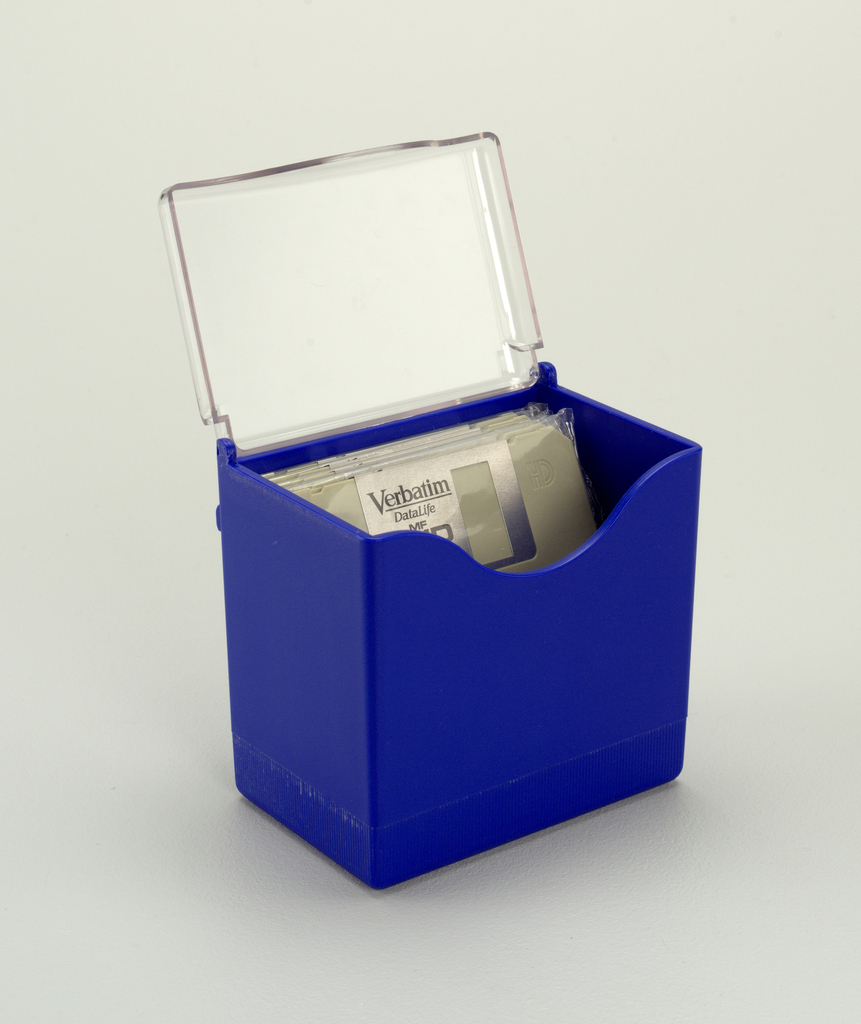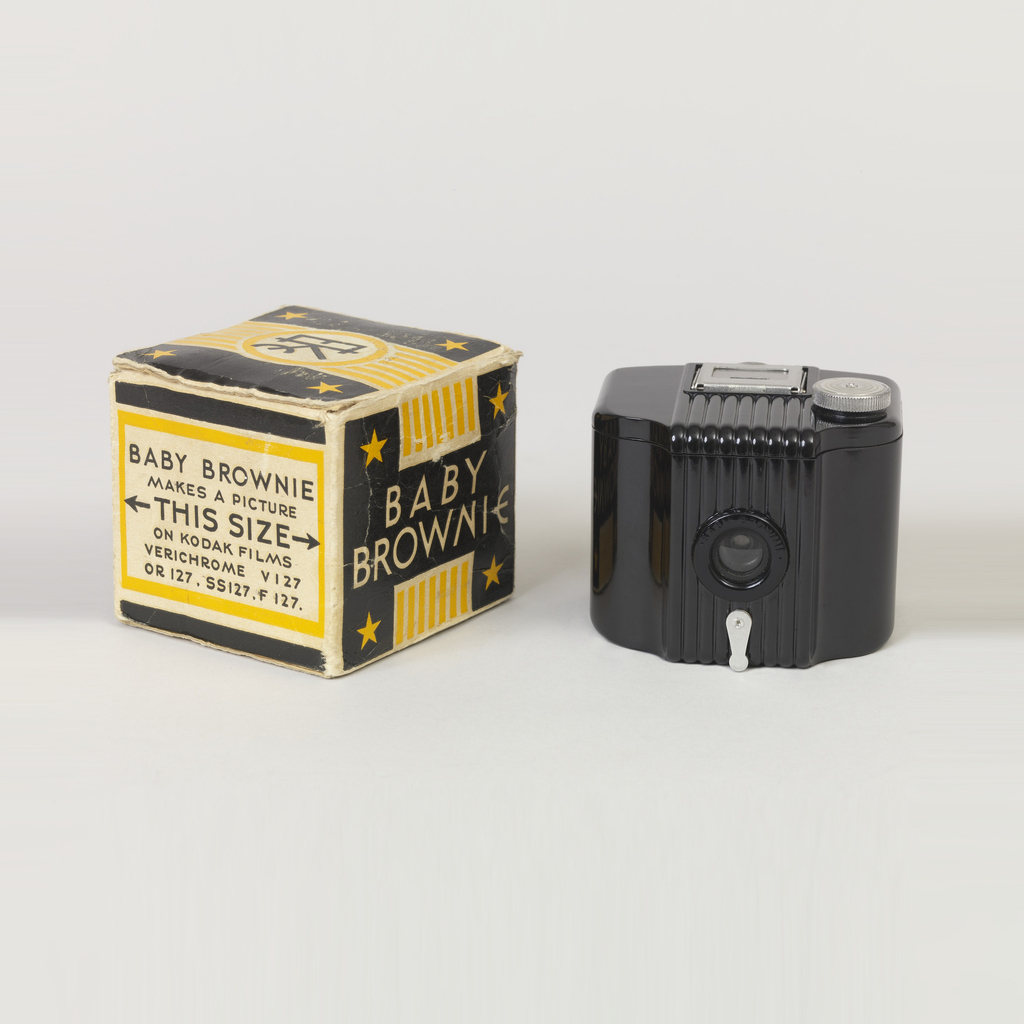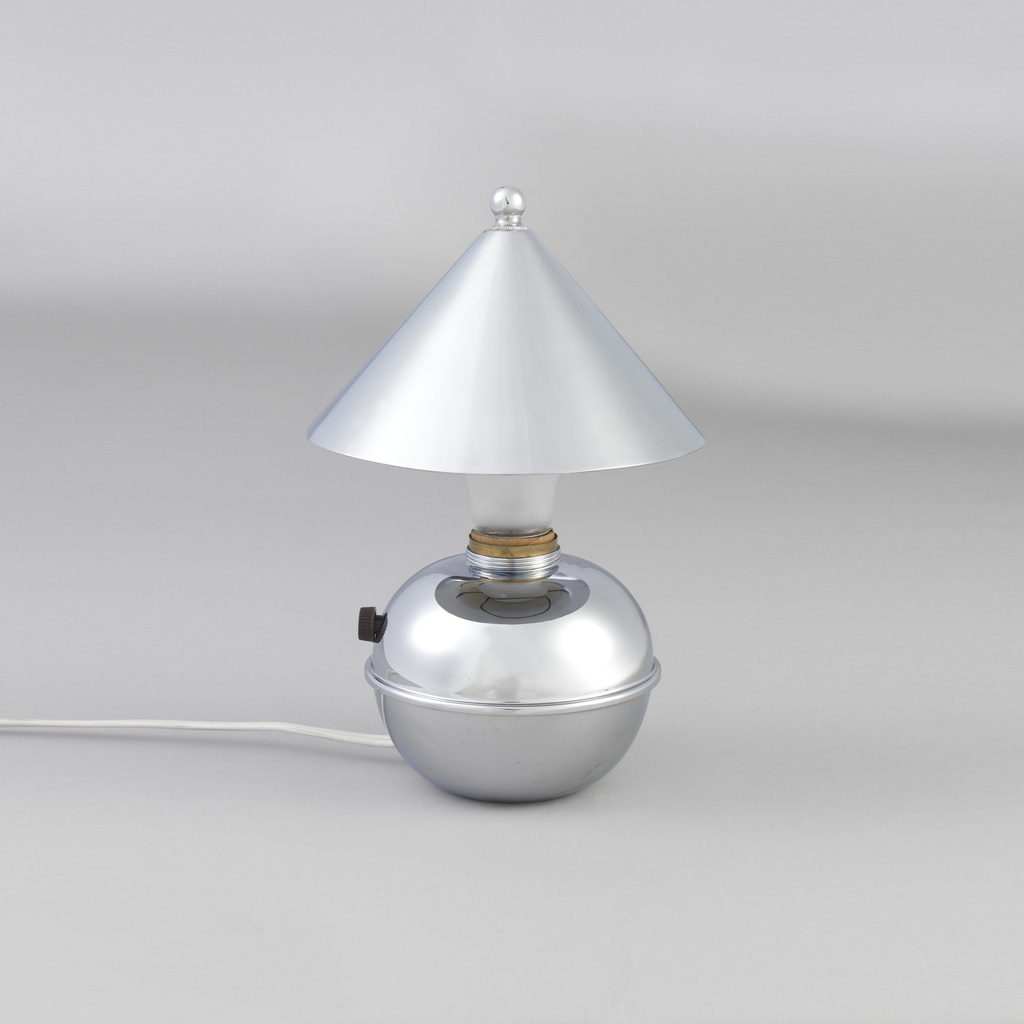This sleek icon of American design embodies the simultaneous rise of listening technology and the streamline moderne style in the 1930s. This portable phonograph’s mechanism was engineered by Alfred Weiland and Selden T. Williams while its case and overall aesthetic were conceived by the prolific graphic and industrial designer John Vassos. Born in Romania, Vassos...
Knoll Group’s Orchestra Disk Holder is an artifact of the bygone days when floppy disks were the most widely used digital storage tools in the corporate landscape. First introduced by IBM in 1971, the floppy disk reigned supreme until the late 2000s when smaller-scale or higher-tech alternatives like the USB flash drive, optical discs (CDs...
When the Eastman Kodak Company first began manufacturing its line of Brownie cameras in 1900, photography was still the domain of trained operators who charged considerable fees for formal portraits and commemorative images of formal occasions. Within the next ten years, however, snapshots became increasingly popular in American culture: holidays, birthdays, and even the everyday...
The father of the English Arts & Crafts Movement William Morris once stated, “Have nothing in your house that you do not know to be useful, or believe to be beautiful.” This maxim surely included the office, and Morris would most certainly have approved of this six-piece desk set by Louis Comfort Tiffany, a perfect...
The prolific industrial designer Henry Dreyfuss (1904-1972) is one of America’s most important industrial designers. He produced a number of the twentieth century’s most iconic designs, including small scale objects such as the Model 302 telephone and Honeywell’s T-86 thermostat as well as monumental works like the Twentieth Century Limited, a new locomotive whose streamlined exterior...
The plastic shine of the L’eggs egg pantyhose package is instantly recognizable to anybody who browsed grocery, drug, or convenience store shelves during the 1970s and ‘80s. First introduced in 1969, L’eggs brought women’s hosiery out of the specialty shop and to the mass market, providing women with an alternative to the frippery of garters...
These cubic cardboard ornaments are just the thing for an atomic holiday. Designed in 1956 by Van der Lanken and Lundquist and manufactured by Norse Craft, Inc., they were exhibited the next year at the 3rd annual American Package Design Competition held at Cooper Union and were subsequently given to the museum’s collection. A modern...
Peeling potatoes is tedious enough without having to do battle with ill-designed kitchen gadgets. Why hadn’t these objects evolved to accommodate users, rather than the other way around? Sam Farber found himself wondering just that when he noticed his wife Betsey, who suffered from arthritis in her hands, struggling to use an old-fashioned peeler. Farber...
Ruth Gerth’s 1931 “Glow Lamp” for Chase Brass and Copper Company is a gleaming example of American modernism with a bit of a dirty secret. The conical shade is topped by a globular finial and clips on to an incandescent bulb, nestled into its fitting atop a spherical base with a horizontal band running around...








